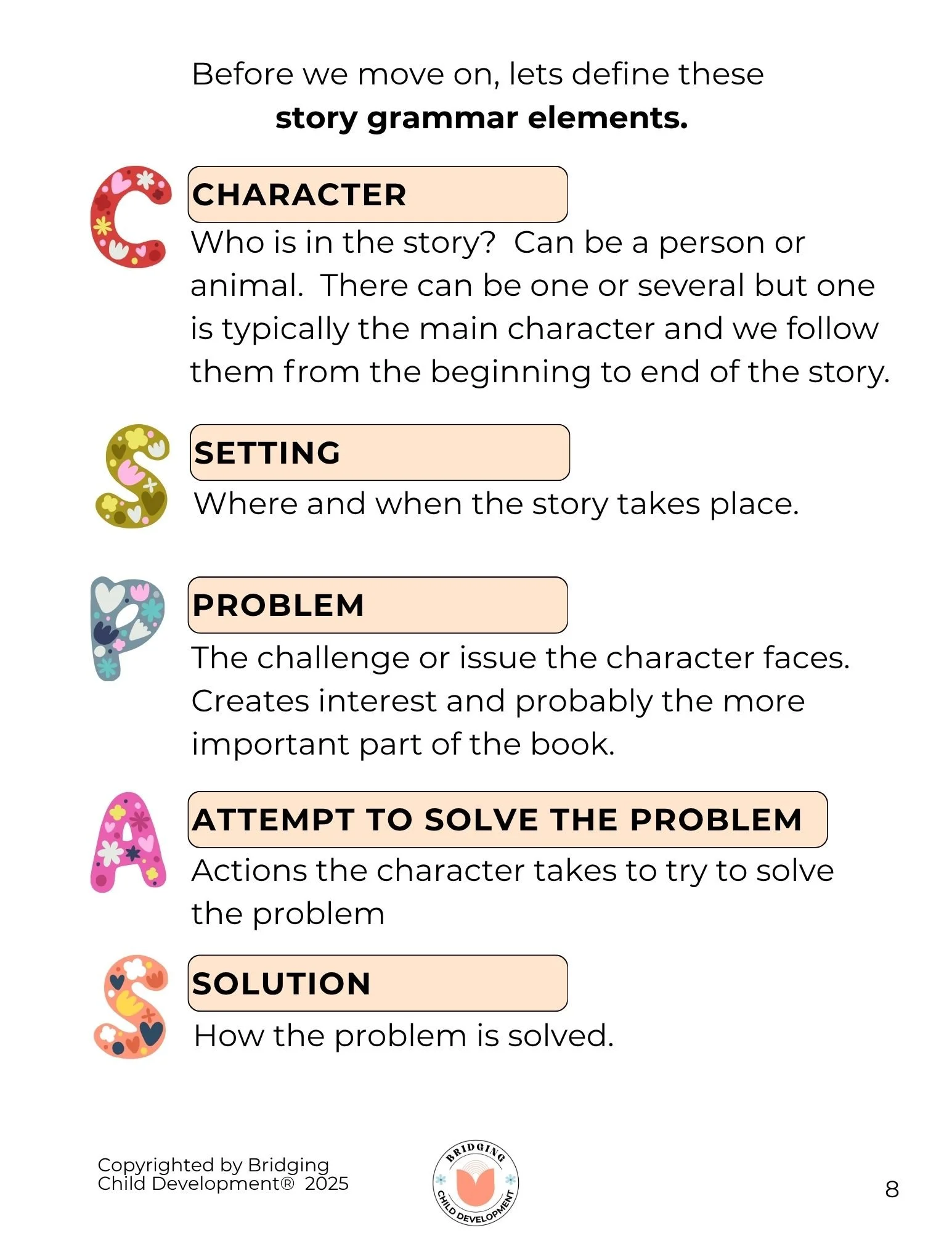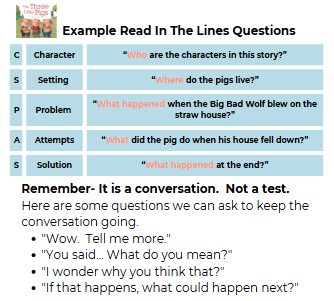PreK Reading Comprehension: Are You Asking The Right Questions During Story Time?
Story time is more than just reading the words on the page, it’s a chance to help children truly understand the story. As a speech-language pathologist who works in child cares and preschools every week, I often see teachers struggle with knowing which questions to ask. Many are surprised to learn that not all questions are created equal, some questions have a much bigger impact on building story comprehension than others. Before we talk about what to do, lets first talk about what NOT to do.
Stop Asking Low-Impact Questions
Many teachers default to questions like:
“What color is this?”
“How many?”
“Do you see the dog?”
These are fine for children who are still learning basic concepts. But if your preschoolers already know their colors, numbers, or can name animals, these questions have little impact on literacy development.
To truly help children understand stories, we need to ask questions that make them think about story structure, not just facts they already know.
Focus on High-Impact Questions
The key is asking the right questions that align with the CSPAS framework or story grammar elements. We call these “Read In The Lines” Questions.
Page 8 of handbook
What are “Read in the lines” questions
Read-in-the-Lines questions are directly answered in the text and align with Character, Setting, Problem, Attempts to Solve the Problem, and Solution (CSPAS). They are highly effective for building early literacy skills because they help children:
Identify and remember key story elements.
Stay engaged and participate actively.
Build vocabulary while strengthening narrative skills.
Create a foundation for higher-order thinking and later comprehension.
Strategies for Implementing "Read in the Lines" Questions
Before Reading (1 minute):
Option 1: Talk about the cover. Are there any CSPAS elements you can pick out just from the cover? Here is an example from The Three Billy Goats Gruff:
Option 2: Do a picture walk. You are not reading, you are just flipping through the pages and point out some things happening on each page using the CSPAS terms. Here is an example from Stellaluna:
During Reading (5-7 mins)
Pause at key moments during the story and ask CSPAS questions. Here is an example from the 3 Little Pigs:
After Reading (2 mins):
Review the story using CSPAS terms: character, setting, problem, attempts, solution
How Long Should STory Time Be for 4 and 5 year olds?
Whole-group read-alouds: 5–10 minutes
Small groups with focused comprehension time: 10–15 minutes
Repeated readings are your friend! You do not and should not cover everything in one reading. Reading the same book over several days allows you to focus on different story elements each time and helps children understand the story on a deeper level.
Quick Classroom Tips:
Keep questions short and conversational, we are teaching comprehension skills not testing comprehension skills.
Use visual aids to reinforce CSPAS and teach these elements!
I cut these out, put them on popsicle sticks, and give each child a set! They hold them up when we come to a new CSPAS element!
Read alouds are incredible opportunities to build children’s language, thinking, and comprehension skills, especially when we ask the right questions. “Read-in-the-Lines” questions help preschoolers become active story thinkers, not just passive listeners.
Want to learn more about supporting reading comprehension skills with your prek class?







